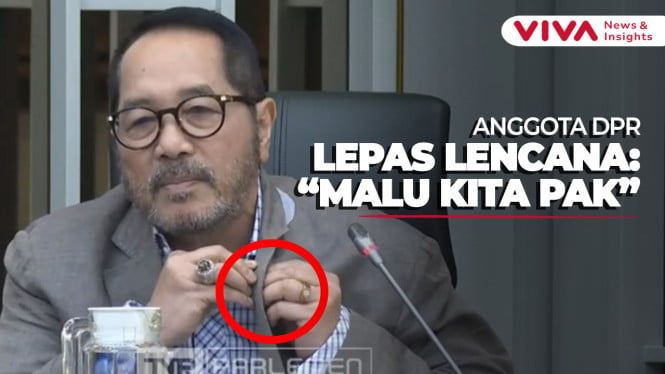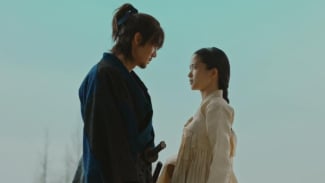Six Scary Paintings by Famous Artists, Have Philosophy
VIVA – Painting is not only beautiful, and philosophical, but also timeless. Paintings can also be considered stories. It turns out that there are some scary and scary paintings in the world made by famous artists. Some people may be bothered by these subject paintings.
For artists, painting is the best way to express their thoughts. Some artists deliberately make paintings with a scary impression.
It has the purpose to people who see it also feel the horror that the painter wants to convey through his work. Throughout history, artists have depicted horror in art, exploring themes such as death, violence, and the supernatural.
During ancient times, artists used their talents to take into account the themes of death and violence seen in life and war.
In the European Renaissance, art called into question the strict and arrogant Christian ideology. In Medieval Europe, dark arts were used to explore the effects of the plague, ranging from the supernatural to the everyday. Modern visual art uses disturbing imagery to confront society's uncomfortable truths.
Well, here are famous paintings that have a reputation as scary works of art but have fun facts inside, as quoted from the thecollector.com page:
1. The Face of War by Salvador Dalí
lukisan
This creepy painting was made by Salvador Dalí. This painting depicts a disembodied head against a desert background, a skinny face like a corpse, and is surrounded by snakes. This chief's expression was extremely gloomy and sinister. This painting aims to show the ugliness of war.
Within the mouth and eye sockets are identical heads and within them are more identical heads, making this aspect boundless another rather depressing concept.
Dalí painted the work in California, in 1940, and it is believed to be more evocative of the Spanish Civil War than the Second World War. The dominating color is brown, with a muted blue-green sky in the distance. Arguably, the brown shades represent war, while the blue-green tones represent peace.
The Fun Facts:
The handprint visible in the lower right-hand corner is Salvador Dalí’s. Including The Face of War, Dalí attested that much of his artwork stemmed from premonitions of future wars. Dalí claimed that two things inspired him: his libido and general uneasiness when it came to death.
2. Severed Heads by Théodore Géricault
lukisan
Théodore Géricault is another famous artist known for his scary paintings. This gruesome illustration, labeled Severed Heads, literally depicts mortality in its darkest hour.
Head rot is visible. On the left, a woman has closed eyes and pale white skin, while in contrast, on the right, the head of a man has his lifeless eyes open with his mouth open.
Even more interesting about this composition is Géricault's use of dark and light tones to convey his intent, the change from life to death. Géricault was so obsessed with the idea of ??death that he was known to store actual dismembered body parts and corpses in his studio.
The Fun Fact:
The necks of the severed heads suggest that these former souls met their end via beheading. However, in reality, this is only the case for one of them.
Géricault obtained the male guillotined head from a thief formerly held in Bicêtre (a hospital that also served as a death-row prison), while the female head was drawn from a live model.
For this reason, it has been inferred that Géricault’s second purpose for painting Severed Heads was to highlight how both men and women often fell victim to decapitation via the guillotine.
3. Dante And Virgil by William-Adolphe Bouguereau
Lukisan seram
French academic artist William-Adolphe Bouguereau creates a painting with a sinister impression. This canvas depicts a scene from the Divine Comedy of the poet Dante. Here, Dante and his guide, Virgil, have ventured into Hell and stopped at the Eighth Circle.
This section of Hell is reserved for those who commit fraud against humanity. Dante and Virgil bear witness to two cursed souls engaged in an eternal battle—a fight to the death!
One of them was Capocchio, an alchemist and heretic; the other is Gianni Schicchi, a swindler, and a swindler. Schicchi who had the upper hand, bit Capocchio's neck while simultaneously kneeling on his back.
This artwork features a disturbing background of demons, hell, and naked figures in pain. Bouguereau has brilliantly captured the "warmth of the moment", displaying Schicchi's fierce power, fluidity of male poses, and raw desperation in their expressions.
Overall, Dante and Virgil are artistic aide-mémoires, highlighting how all individuals are equal in God's eyes, and that when banished to Hell, one does not become a human or an animal but something in between.
The Fun Fact:
Regarding the theme of the painting, it is a one-off by Bouguereau, suggesting that the dark content may be too distracting for him to reproduce.
4. The Death Of Marat II by Edvard Munch
Lukisan seram
Paintings by Edvard Munch depict the darkness of the human experience especially when it comes to disconnection. The Death of Marat II was born from the mind of renowned Norwegian artist Edvard Munch and has one great story behind it. Well, there are two.
It all started when Munch broke up with his fiancé, Tulla Larsen in 1902. Sources claim that the couple had a fight at his summer home on Aagaardsstrand, and during the scuffle, a gun exploded, injuring Munch's hand.
This incident traumatized the artist who insinuated Larsen's guilt—and served as the inspiration for two paintings: The Death of Marat and The Death of Marat I. The subject of both titles, "Marat," refers to Jean-Paul Marat, a murdered French revolutionary. in the bath by radical Charlotte Corday in 1793.
In The Death of Marat II, instead of Marat and Corday being the focus, it is understood as Munch lying dead in bed, with naked Larsen standing tall beside him.
He is seen as the killer for two main reasons: the wound on the man's arms a symbol of Munch shooting his hand during an earlier altercation with Larsen and the physical similarities between the woman in the painting and Larsen himself.
The Fun Fact:
Munch did the painting while he was testing expressionistic techniques. He developed a unique method: distinct horizontal and vertical brushstrokes that were emblematic of his aggression and unhinged mental state which eventually led to his breakdown in 1908.
5. Electric Chair by Andy Warhol
Lukisan
Electric Chair is the brainchild of the famous artist Andy Warhol and represents his inception of hand printing images onto canvas and then translating the technique to paper. The original 1964 black and white artwork was based on a press photograph (1953) of the death chamber at Sing Sing State Penitentiary in New York and was screen printed with silver acrylic paint.
The monochrome-colored prints were developed a few years later when Warhol started to experiment with composition and color. In 1980 Warhol described his new process of printing as a significant change in his practice
The most haunting of the Electric Chair series was the political controversy surrounding the death penalty in America at the time, especially in New York City, where the last two executions at Sing Sing were scheduled by electrocution. Thus, Warhol provides a grim but very poignant metaphor for death.
The image is devoid of human presence. Basically, the work is a death denoting death, which should resonate with anyone aware of human death.
The Fun Fact:
The inspiration behind Warhol’s Electric Chair series was a lunch date with curator Henry Geldzahler. Warhol stated: “We were both having lunch one day in the summer [of 1962] … and he laid the Daily News out on the table. The headline was ‘129 DIE IN JET,’ and that’s what started me on the death series—the Car Crashes, the Disasters, the Electric Chairs”. (Andy Warhol and Pat Hackett).
6. The Massacre Of The Innocents by Peter Paul Rubens
Lukisan mengerikan
The Massacre of the Innocents by renowned artist Peter Paul Rubens has earned the top spot for its cruel depiction of infanticide. According to the Gospel of Matthew in the Bible is a real incident.
In the New Testament, it was the Judean King Herod the Great who ordered the slaughter of all Bethlehem boys two years of age and under. His dehumanizing rationalizations for the commandment are, unsurprisingly, tied to the ego no matter what version of the story you get.
Herod killed the babies out of anger at being ridiculed by the Magi or the Three Wise Men/Three Kings or because he was warned that the coming birth of a son would snatch his crown.
In essence, it's a moving canvas, with perhaps the most prominent focal point being the center of death: the mother, her child, and the soldier. The fight between the three of them was very dramatic.
The second area of ??emphasis was on the far right: the soldier was ready to push the baby onto the pillar that was already stained crimson, and the two women reached out to stop him.
The Fun Fact:
In 1923, a woman inherited The Massacre of the Innocents but refused to keep it. He thought the painting was too gruesome. Instead, he loaned it to the Reichersberg Abbey monastery in Austria. It was later sold at auction for 76.7 million!
In short, The Massacre of the Innocents is a serious depiction of something that is happening today. Small children are still being slaughtered, abused, and exploited.































